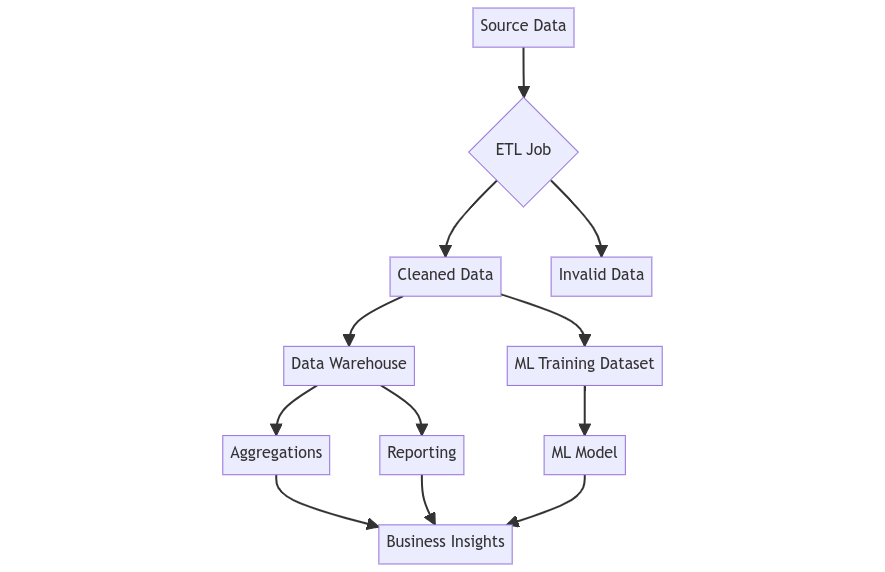Introduction
Deploying a data engineering project from development to production can be challenging. There are many moving parts that need to come together – infrastructure, data pipelines, models, monitoring, and more. Having a comprehensive checklist is essential to ensure nothing falls through the cracks. This guide provides a step-by-step checklist of considerations when taking a data project live in production.
Following this checklist will help you avoid common pitfalls and roadblocks when going to production. It covers everything from infrastructure setup to testing, documentation, and monitoring. While every organization and use case is unique, this checklist hits the key items that most data engineering deployments require.
With careful planning and execution, deploying to production can go smoothly. This checklist aims to provide a framework to follow along each step of the journey. Let’s dive in!
Checklist
Infrastructure & Environments
- Set up separate development, staging, and production environments
- Provision infrastructure resources (compute, storage, etc)
- Configure access controls and permissions for each environment
- Build deployment pipelines and workflow orchestration
- Parameterize configurations to be environment-agnostic
Having distinct environments for development, testing, and production is crucial to prevent issues from impacting end users. Resources like compute, storage, and access should be completely separated. Automated deployment pipelines will help smoothly move changes across environments in a controlled manner. Parameters and configuration should be environment-agnostic so the same code can run in dev, test, and prod.
Testing & Validation
- Write unit and integration tests for code changes
- Perform end-to-end validation on staging environment
- Verify pipeline outputs and reportingmetrics
- Check for data errors, anomalies, or outliers
- Confirm production data integrity after cutover
Thoroughly testing all changes on a staging environment mimicking production is vital before going live. Validate code, data outputs, reporting, and business metrics on staging. Start by testing with a subset or sample of production data to ensure everything looks good. Monitoring staging allows catching issues before they impact end users.
Monitoring & Alerting
- Set up logging for pipelines and applications
- Configure monitoring dashboards and alerts
- Monitor infrastructure metrics (CPU, memory, etc)
- Get alerts on pipeline failures or data errors
- Build custom app metrics to track business KPIs
Robust observability through logging, metrics, and alerting is essential for running production data systems smoothly. Monitor both system health metrics (CPU, memory, etc) and custom business metrics tied to KPIs and SLAs. Alerts for pipeline failures or data anomalies allow rapid detection and resolution of issues.
Documentation & Runbooks
- Document system architecture, data flows, metrics
- Create operational runbooks for common procedures
- Record dashboard screenshots and explanations
- Outline incident response plans
- Document where configs and credentials are stored
Complete documentation is invaluable for operating and maintaining production systems smoothly. This includes architecture diagrams, data flow mappings, dashboard references, operational runbooks, and incident response procedures. Store documentation in a central place like a wiki for easy access across teams.
Security & Compliance
- Complete security reviews and penetration testing
- Verify regulatory compliance requirements are met
- Encrypt sensitive data in transit and at rest
- Implement access controls and principals of least privilege
- Regularly patch, audit, and rotate credentials
Working with production data demands proper security precautions. Conduct thorough security reviews, meet compliance regulations, implement access controls and encryption, and follow security best practices around patching, auditing, and credentials.
Maintenance & Support
- Plan for ongoing system maintenance windows
- Have escalation procedures for production issues
- Build processes for feature releases and hotfixes
- Prepare for events requiring downtime or failover
- Set up on-call schedule for production support
Smooth ongoing maintenance and operations keeps production environments stable. Plan maintenance windows for routine changes and upgrades. Have technical resources on-call for break-fix issues and incidents requiring rapid response. Follow established processes for new feature releases, hotfixes, and events requiring downtime.

Conclusion
Following this comprehensive checklist will set your data project up for success when moving into production. The key is covering all your bases – infrastructure, testing, monitoring, documentation, security, and maintenance. While launching to production can feel daunting, careful planning and validation across environments will instill confidence along the way.
Remember to customize this checklist to your specific organizational needs. Use it as a starting point and modify accordingly. With the proper precautions taken, your production launch can be smooth sailing.



![Python Decorators Unleashed [eBook]](https://datasciencehorizons.com/wp-content/uploads/2023/10/python_decorators_unleashed_ebook_header-150x150.webp)







